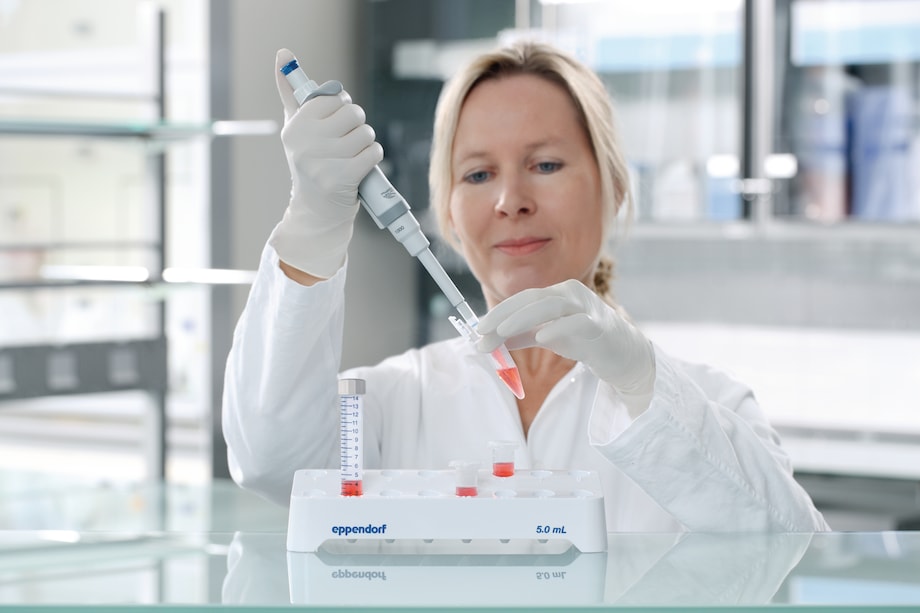MENU
BD | BDT
BD | BDT
-
- Benchtop Centrifuges
- Floor-Standing Centrifuges
- Refrigerated Centrifuges
- Microcentrifuges
- Multipurpose Centrifuges
- High-Speed Centrifuges
- Ultracentrifuges
- Concentrator
- IVD Products
- High-Speed and Ultracentrifuge Consumables
- Centrifuge Tubes
- Centrifuge Plates
- Device Management Software
- Sample and Information Management
You are about to leave this site.
Please be aware that your current cart is not saved yet and cannot be restored on the new site nor when you come back. If you want to save your cart please login in into your account.
No results found
Search Suggestions
Protein LoBind® Tubes
Different laboratory tubes

DNA LoBind® Tubes are available in a variety of sizes from 0.5 mL to 5 mL
Eppendorf LoBind® tube with open lid and volume marker

Superior recovery with Eppendorf Protein LoBind® tubes
Easy-secure Safe-Lock® microtube

Eppendorf Safe-Lock DNA LoBind® Tubes offer sample protection and superior recovery
Eppendorf LoBind® tubes - 0.5 mL, 1.5 mL, 2 mL and 5 mL

Safe-Lock security with LoBind® technology - available in 0.5 mL, 1.5 mL, 2 mL and 5 mL format
Conical Tubes 15+50mL, Protein LoBind

Protein LoBind® Tubes are also available in 15 mL and 50 mL conical tube format to help you process large volumes more efficiently.
Scientist pipetting into Eppendorf 5 mL microtubes® stored in rack

Eppendorf offer a comprehensive range of accessories for the 5 mL microtubes and are the perfect option for working with medium-sized volumes!
Eppendorf LoBind® - How it works
Videos not loading, because cookies have been rejected. Change your

Product Information
Whether it’s proteomics or another field of protein research, the Eppendorf Protein LoBind Tubes are specifically designed to ensure you get maximal protein recovery. Recover more of your valuable protein samples to facilitate accurate downstream analysis and help prevent enzyme degradations.-
Request lot-specific certificates (not applicable for "Eppendorf Quality")
-
Learn more about purity grades available from Eppendorf
You will find additional download material at the bottom of this page
Products (11)
11 Products
Catalog no.
0030122283
|
Catalog no.
0030122356
|
Catalog no.
0030108094
|
Catalog no.
0030108116
|
Catalog no.
0030108132
|
Catalog no.
0030108302
|
Catalog no.
0030122216
|
Catalog no.
0030122240
|
Catalog no.
0030108450
|
Catalog no.
0030108442
|
Show more Products
Added to Your Cart
Product Information
Applications
Features
Product Information
Prevent sample loss due to sample-surface binding with the Eppendorf Protein LoBind Tubes. With a unique, two-component polymer mix that helps to create a hydrophilic surface, protein recovery rate and downstream analysis is significantly improved.
With standard vessels, over 90 % of the sample can be lost within 24 hours due to binding to the plastic surface. Use Eppendorf LoBind Tubes and you don't need to worry about losing your precious samples any longer!
With standard vessels, over 90 % of the sample can be lost within 24 hours due to binding to the plastic surface. Use Eppendorf LoBind Tubes and you don't need to worry about losing your precious samples any longer!


Eppendorf Protein LoBind® products
Protein LoBind® products are available in various formats, including tubes, microplates and deepwell plates to ensure the needs of your specific application are met. Whether you’re looking to scale down sample volumes or increase throughput, the LoBind range is here to help.




Superior protein recovery
Recover more than 90 % of your protein compared to standard vessels! Eppendorf Protein LoBind® Tubes also offer a significantly higher rate of recovery after incubation for 96 hours in comparison to competitor low binding tubes. See Application note 180 for more details.




Outstanding signal during MALDI-TOF with Protein LoBind® Tubes
Protein LoBind® Tubes help to increase signal intensity during MALDI-TOF analysis, allowing you to detect and analyse at concentrations normally considered undetectable (1 pmol) when compared to standard tubes. In these graphs, the arrows identify the signals in each experiment. (Source: Dr. S. Seeber and Dr. Humeny, Institute of Biochemistry, University of Erlangen-Nürnberg, Germany, see Application Note 180 for more details).


Read More
Read Less
Applications
- Preparation or storage of protein, peptide or antibody samples
- Enzymatic assays – the hydrophilic surface reduces denaturation when it comes into contact with the tube inner wall
- Prevention of sample loss during storage of virus stock solutions
- Storage of cell suspensions
Features
- Eppendorf LoBind material ensures optimized sample recovery for improved assay results
- Free of surface coating (e.g., silicone) to minimize the risk of sample interference
- Lot-certified PCR clean purity grade: free of human DNA, DNase, RNase and PCR inhibitors
- Available in tube, microplate, and deepwell plate formats for easy-up scaling
- Precise lid sealing to minimize evaporation






























